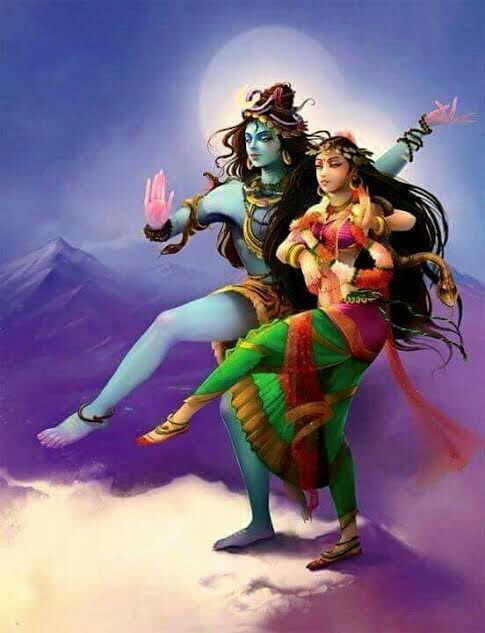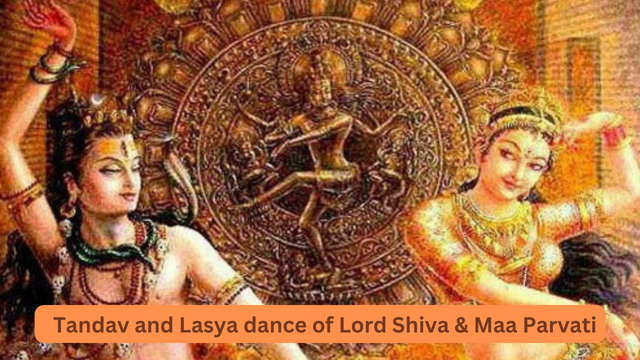Various forms of dance are found in India, most of which are historical dances mainly related to our religion and mythology. Under the dance, there is the coordination of emotion with rhythm. Movement is a combination of expression of emotion through the mouth and eyes. According to the principle of Natyashastra, there are two styles of dance – Tandav and Lasya created by the first dance originator – Natraja Shiva.
What is Tandav ?
Tandav dance is considered to be a symbol of cosmic creation and destruction as well as a symbol of the natural cycle of life and death. In most of the religious areas in South India, Tandva Nrityam is performed by dancers. The opposite of the Tandava dance is known as the dance called Lasya or the dance of Goddess Parvati. Its name is beauty, grace, joy, and compassion. The rhythmic steps of this dance are full of harmony, grace, and tenderness and the Shiva dance Tandva is full of heroic rasa. It symbolizes the harmony of the ancient motion of the creation of the world. The dance in which Veera-rasa is performed is called Tandava.
Tandava dance is more suitable for men because some such anaphoras are performed in it, which are male-dominated. Tandav can be performed by both men and women. According to the scriptures, there are seven Tanduv dancers. Whose names are as follows: Anand, Sandhya, Kalika, Tripura, Sanhar. Apart from this, the two tandavas that Shivji has done with Parvati are Gauri and Uma. Veer Rasa, Vibhatsat Rasa, and Horrible Rasa, the dance showing the cataclysmic form come under the Tandava dance. In the Tandav, the five activities of Shiva, creation, condition, destruction, disappearance, and grace are displayed. There is a feeling of bravery, insolence, and anger in the dance. In the scriptures, the symbol of Tandav and Shiva has been considered.

Nataraja – King of Dance
There are two poses in the Tandava dance – the Raudra form and the Anand form. The Raudra form is quite fierce and while the other form of Tandava is blissful. It is believed that Shiva’s fierce orgy leads to destruction and the creation is uplifted only by the blissful orgy. In this form, the Tandava dance is concerned with both the rise and fall of creation. In the Shiva Siddhanta tradition, Shiva is regarded as the supreme lord of dance as Nataraja (“King of Dance”).
Nataraja is considered to be another name for Shiva. Shiva in the form of Nataraja is an excellent dancer and the basis of all arts. The idol of Nataraja includes dance expressions and postures. Shiva is believed to have shown the Tandava to the sage Bharata through his devotee Tandu. Many other scholars also have a different opinion, according to them Tandu himself would have worked in the theater or would have been a writer and he was later included in the Natya Shastra.

What is Lasya Nritya ?
Along with this, he also taught the form of the Lasya dance of Goddess Parvati to sage Bharata. Lasya is a dance performed by women, in which hands remain free and abhinaya is performed to express emotion, while Tandava is not abhinaya. Later on the orders of Shiva, Munibharat taught these dance forms to mankind. It is also believed that the word Taal is derived from a combination of Tandav and Lasya.
Symbolic images of Parvati, her gestures convey wisdom, the power of nature, and the protection of the followers. A woman is a symbol of beauty and tenderness, so only the performance of a dancer by her is popular. Just as Tandava can be performed by men and women, similarly Lasya can also be performed by men and women. According to the scriptures, it is believed that to successfully display the aliments of Lasya, Shri Krishna established the Rasa Mandal. Under Rasa, there are many types of Vatsadalye, etc., which have sweetness, beauty, tenderness, etc., come under Lasya Nritya. Shringar Pradhan, Lavanyamayi, and Vilasyuktar Nrityal are called Lasya Nrityi. Parvati is considered the symbol of Lasya in the scriptures.

Natya Shastra
Bharat Muni’s Natya Shastra is considered to be the first authentic book on dance. This is also called Panchaveda. The compilation of this text probably dates back to the second century AD, although the arts mentioned in it are quite old. It consists of 36 chapters depicting almost all aspects of theater and dance. Dance, or expression dance, involves body movements, facial expressions, hand gestures, and postures to convey the meaning of a song.
It was in the Natyashastra that the theory of bhava and rasa was presented and all human emotions were divided into nine rasas – Shringara (love); Veer (Valor); Rudra (cruelty); fear (fear); vibhutsa (disgust); humor (laughter); karuna (compassion); amazing (wonder); and calm (peace). The purpose of any dance is to generate rasa, through which the feelings are conveyed to the audience by the dancer.
The Indian classical dance technique described in the Natyashastra is one of the most elaborate and complex techniques in the world. It includes 108 katanas, four standing positions, 32 dance positions of the legs and hips, nine neck positions, seven positions for the eyebrows, and 36 types of gazes and hand gestures, including 24 for one hand and 24 for both. 13 positions for the hands are shown.
